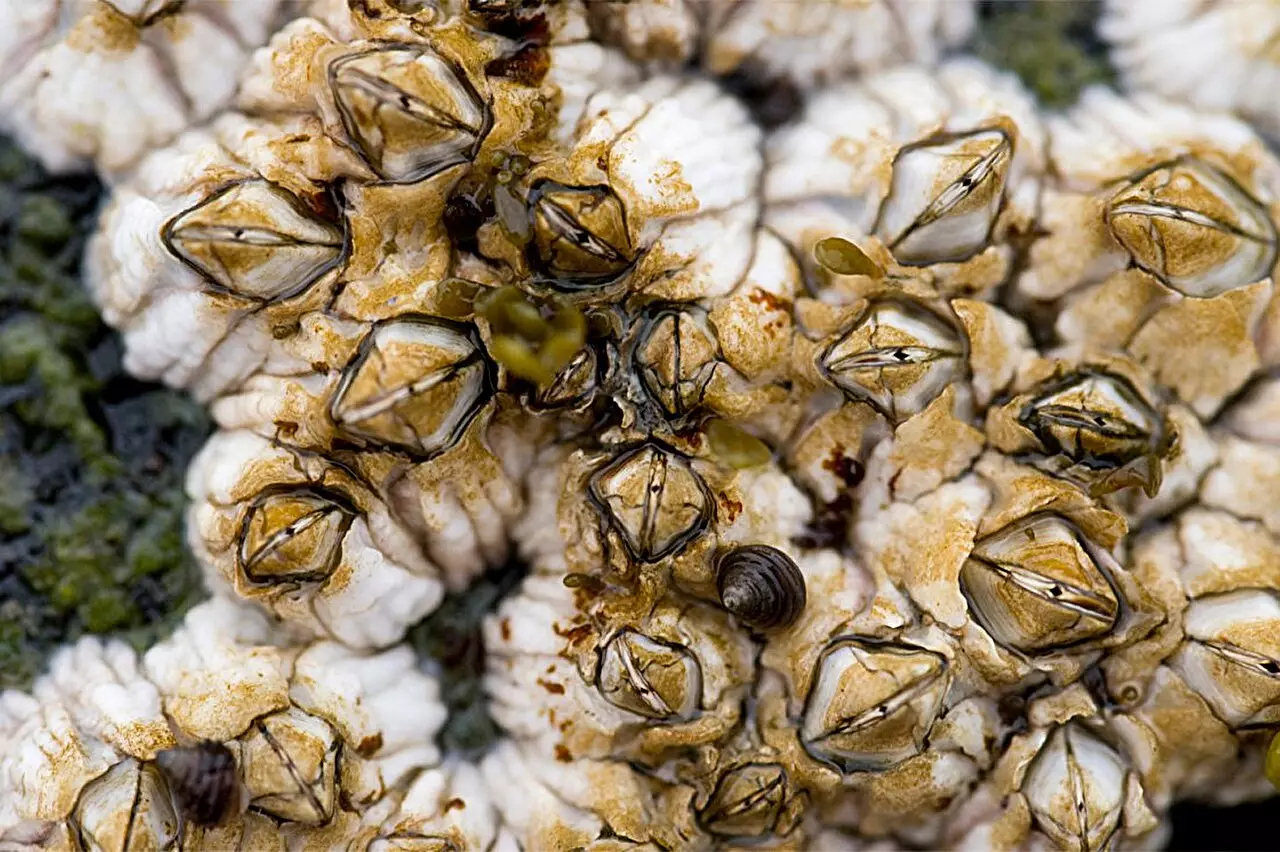Biofilms, complex aggregates of microorganisms that adhere to surfaces, pose significant challenges in both medical and industrial contexts. These structures, comprising bacteria and fungi, often form in environments ranging from human tissues to medical devices and industrial pipes. One of the most worrisome aspects of biofilms is their ability to protect the bacteria within them, rendering conventional antibiotics largely ineffective. This phenomenon occurs because the bacteria in biofilms can enter a dormant state, allowing them to resist the effects of antibiotics designed for active, metabolically responsive organisms. Professor Abraham Joy from Northeastern University’s Department of Bioengineering has taken a unique approach to tackling this problem, using insights gleaned from barnacles.
Professor Joy’s research team has turned their attention to the natural world, specifically barnacles that utilize specific chemicals to prepare surfaces by cleansing them of bacteria before they deposit their sticky adhesive. Understanding this biological mechanism prompted the team to explore whether a synthetic polymer developed in their lab could replicate this effect. Operating on the principle of simulating natural processes, Joy’s team sought to develop materials that could disrupt the grip that biofilms have on various surfaces. Joy’s excitement was palpable when the polymer demonstrated efficacy in loosening biofilms, particularly those containing Pseudomonas aeruginosa, a notoriously resistant strain of bacteria.
The findings from Joy’s research, published in the *Journal of the American Chemical Society*, revealed that the polymer could remove up to 99% of biofilm biomass associated with Pseudomonas aeruginosa. However, what makes this research especially intriguing is Joy’s assertion that the goal is not simply to eliminate the bacteria. Instead, it emphasizes the importance of addressing the biofilm itself, akin to weakening the structure of a house without harming the individuals inside. This approach opens the door to potential treatments for chronic wounds that are often complicated by biofilm presence, as well as industrial applications for clearing bacterial blockages in pipelines and medical equipment.
One key aspect of this research is the distinction made by Joy regarding the nature of biofilm disruption. The process hinges on the mechanical disruption of the biofilm’s structural integrity rather than direct antibacterial action. Joy likens biofilms to grass growing in a yard; the polymer acts as a solution to loosen the grass, simplifying its removal without disrupting the overall ecosystem of the yard. This analogy encapsulates the research’s ethos and points towards a novel strategy in antibiotic design that prioritizes biofilm management as a critical area of focus.
Joy’s team conducted extensive comparisons of various biofilms to evaluate the polymer’s performance. While it was particularly successful against Pseudomonas aeruginosa, it proved less effective with other bacterial species like Staphylococcus aureus and Escherichia coli. This disparity arose from differing biofilm compositions; for instance, the former is carbohydrate-rich, while the latter consists primarily of proteins. Understanding these variances is vital. Joy and his team are now refining their research to uncover the interaction mechanisms between the polymer and the components of various biofilms. This could pave the way for the development of targeted polymers that can effectively manage diverse bacterial scenarios.
Looking ahead, Joy’s research holds promise not only for the medical community, potentially transforming wound care by introducing polymers manufactured specifically for biofilm disruption but also for industries that rely on maintaining clean and efficient pipelines. The next phase involves applying these polymers in liquid form in real-world scenarios, particularly on infected wounds. Success in these trials could mark a significant departure from conventional treatment paradigms and suggest a new frontier in how we combat antibiotic resistance.
However, Joy also recognizes the complexities involved. The polymer’s adhesion qualities must be meticulously calibrated; it must neither be too hydrophobic nor too hydrophilic. This delicate balance is crucial for ensuring the polymer effectively interacts with the biofilm without becoming ineffective by washing away or failing to penetrate.
Ultimately, the innovative strategies emerging from Joy’s research advocate a paradigm shift in antibiotic development. By prioritizing the physical properties of biofilms in the design of antimicrobial agents, researchers are beginning to rethink treatments to comply with biological realities. As scientists explore the detailed interactions between synthesised polymers and biofilms, we may witness a transformative advancement in both medical and industrial microbiology, driven by insights from nature itself.


Leave a Reply